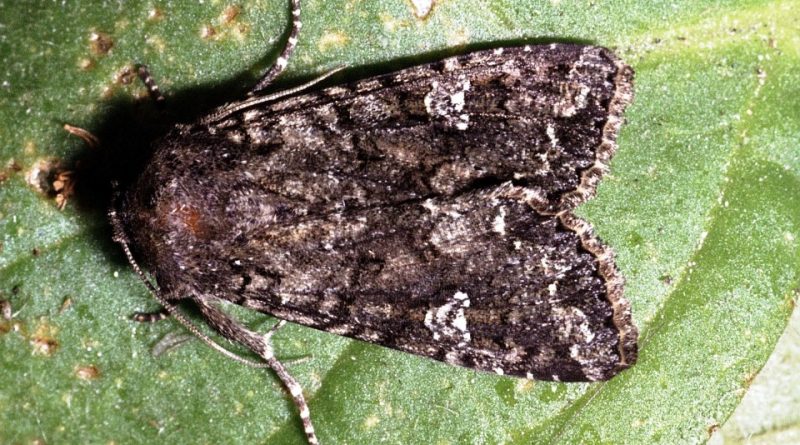Mamestra brassicae
Mamestra brassicae
The Cabbage moth (Mamestra brassicae, Linnaeus, 1758) is a moth belonging to the Noctuidae family.
Systematics –
From a systematic point of view it belongs to:
Eukaryota Domain,
Kingdom Animalia,
Sub-kingdom Eumetazoa,
Superphylum Protostomy,
Phylum Arthropoda,
Subphylum Tracheata,
Superclass Hexapoda,
Insecta class,
Subclass Pterygota,
Endopterygota cohort,
Superorder Oligoneoptera,
Panorpoidea section,
Order Lepidoptera,
Suborder Glossata,
Infraorder Heteroneura,
Ditrysia Division,
Superfamily Noctuoidea,
Noctuidae family,
Genus Mamestra,
M. brassicae species.
The following terms are synonymous:
– Barathra brassicae (Linnaeus, 1758);
– Hadena brassicae (Linnaeus, 1758);
– Phalaena brassicae Linnaeus, 1758;
– Phalaena omicron Geoffroy, 1785.
Geographic Distribution and Habitat –
The Cabbage moth is a moth with a wide geographic distribution in parts of Europe and Asia ranging from about 30 ° N to 70 ° N latitude.
The geographical area therefore includes the Palearctic region, with areas of Europe, Asia north of the Himalayan mountains and Africa north of the Sahara desert.
Although this insect is generally limited to these areas, there is a threat that it can be introduced to new regions through global food trade industries with the import of live plants.
This moth is primarily known as a pest responsible for severe crop damage of a wide variety of plant species. The common name is a misnomer as the species feeds on many fruits, vegetables, and crops of the Brassica genus (i.e. cabbage, broccoli, Brussels sprouts). Other noteworthy host plants include tobacco, sunflower, and tomato, which make this pest species particularly economically harmful.
Among the host plants to which it causes particular damage we remember: Cauliflower, Chard, various vegetables, Tomato, Pepper, Potato, Sunflower, Tobacco, Cereals, ornamental and Pome fruit.
Morphology –
The Mamestra brassicae is a large butterfly that can reach up to 45 mm in wingspan.
The livery of the front wings is brownish-gray, with black and white motifs and designs, while that of the hind wings is uniformly greyish.
The larva measures about 40-45 mm in length and is greenish in color (young larva) or greenish-gray in color (mature larva); moreover the livery is completed by longitudinal dark bands and by the yellowish ventral zone.
Attitude and Life Cycle –
The Mamestra brassicae is an insect that spends the winter in the chrysalis phase.
The adults, which are nocturnal, appear in the period of April-May and lay their eggs on the underside of the leaves.
The eggs generally contain a few dozen eggs.
In the month of June the larvae come out and immediately begin to feed, during the night, while during the day they hide in the ground.
After about 1-2 months, depending on the environmental temperatures, the larvae reach maturity and crystallize in the ground, a few centimeters deep.
The fluttering of second generation adults generally occurs in the month of July; the larvae of this second generation then appear from the month of August. These larvae crystallize and overwinter.
In this way, the Mamestra brassicae therefore completes two generations a year even if in geographically colder areas there is only one generation.
The damage occurs on the leaves, both internal and external, and on the stem and is determined by the larvae that voraciously gnaw the leaves at night and dig tunnels in the stems, also causing the death of the plant.
Ecological Role –
The Mamestra brassicae is a moth with nocturnal activity that can cause particular damage to plants such as: Cauliflower, Chard, various vegetables, Tomato, Pepper, Potato, Sunflower, Tobacco, Cereals, ornamental and Pomacee.
The containment of this insect should be preventive with appropriate rotations, associations, reduction of crop specializations.
The fight against the Mamestra brassicae is currently of a chemical type and follows the criteria of the guided and integrated fight but also makes use of biotechnological and biological products, remembering that this moth is controlled, in the environment, by some entomophages such as:
– Hymenoptera: Amblyteles armatorius Forst., Parasitoid of larvae;
– Diptera: Compsilura concinnata Meig., Parasitoid of larvae.
The guided fight technique involves the installation of sexual traps, to establish the moment of the intervention (flickering); these traps are to be installed in April.
The containment interventions of the moth must be carried out against the larvae of the first ages.
Guido Bissanti
Sources
– Wikipedia, the free encyclopedia.
– Russo G., 1976. Agricultural Entomology. Special Part. Liguori Editore, Naples.
– Tremblay E., 1997. Applied entomology. Liguori Editore, Naples.

